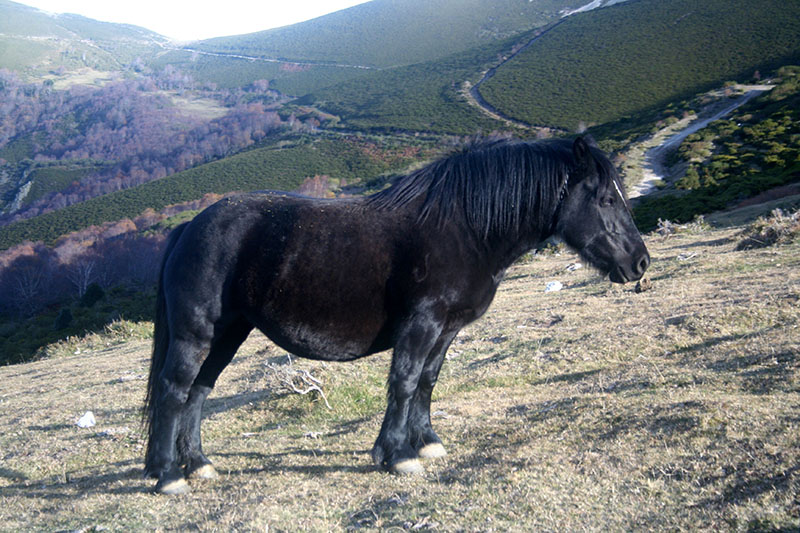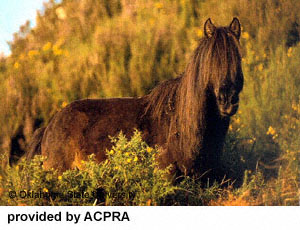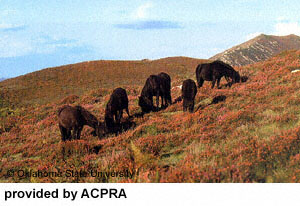Asturian Horses
 Also known by: Asturcon
Also known by: Asturcon
This breed originated in Northern Spain. It is used for riding and packing, standing at 11.2 to 12.2 hands.
Centuries ago the existence of a small horse breed originating in the northwest of Spain was recorded. The Romans referred to these horses as asturcons and thought well of them - and they were popular with the French during the Middle Ages. Pliny (23-79 A.D.) described them as a small breed that did not trot, but moved in an easy gait by alternately moving both legs on one side.
The ambling gait was natural for this small horse, and done in such a way that it gave a comfortable ride. As a result, they become popular as ladies' mounts. Known as palfreys in England, they were called haubini in France, a word that later became hobbye and eventually hobby horse. Much of this blood was taken to Ireland, where the "Irish Hobby" was greatly admired.
 It is thought by some that the Asturian developed as a cross between the Garrano pony
of northern Portugal and Spain - a direct descendant of the Celtic pony - and the
Sorraia, the original saddle horse of Iberia, which gave the breed its calm temperament.
Some other blood must have been present in the Asturian's lineage, however, because
the ambling gait is not present in either the Sorraia or Garrano. Suspected by the
author is a strong and more direct link to the ancient Celtic pony, of which some
strains at least must have been amblers. There is a narrow but clear trail of ambling
horses to be found in Turkey, China, Mongolia, and Siberia, tracing the route of the
prehistoric horse to the now submerged land-bridge at the Bering Straits.
It is thought by some that the Asturian developed as a cross between the Garrano pony
of northern Portugal and Spain - a direct descendant of the Celtic pony - and the
Sorraia, the original saddle horse of Iberia, which gave the breed its calm temperament.
Some other blood must have been present in the Asturian's lineage, however, because
the ambling gait is not present in either the Sorraia or Garrano. Suspected by the
author is a strong and more direct link to the ancient Celtic pony, of which some
strains at least must have been amblers. There is a narrow but clear trail of ambling
horses to be found in Turkey, China, Mongolia, and Siberia, tracing the route of the
prehistoric horse to the now submerged land-bridge at the Bering Straits.
Living in a feral state for the most part, under difficult conditions, the breed was facing extinction. The predominant colors for the Asturian is black or bay with no white markings.
 The Asturian has a small, although, sometimes rather heavy head, with a straight profile,
small ears, and large eyes; the neck is long and quite thin with a flowing mane; the
withers are moderately high; the back straight and strong; the croup is sloping with
a low tail-set; the shoulder is well sloped. The feet of this pony are well shaped
and very tough.
The Asturian has a small, although, sometimes rather heavy head, with a straight profile,
small ears, and large eyes; the neck is long and quite thin with a flowing mane; the
withers are moderately high; the back straight and strong; the croup is sloping with
a low tail-set; the shoulder is well sloped. The feet of this pony are well shaped
and very tough.
Population Status: Rare
References
Hendricks, Bonnie L., International Encyclopedia of Horse Breeds, Univ of Oklahoma Press, 1995.
